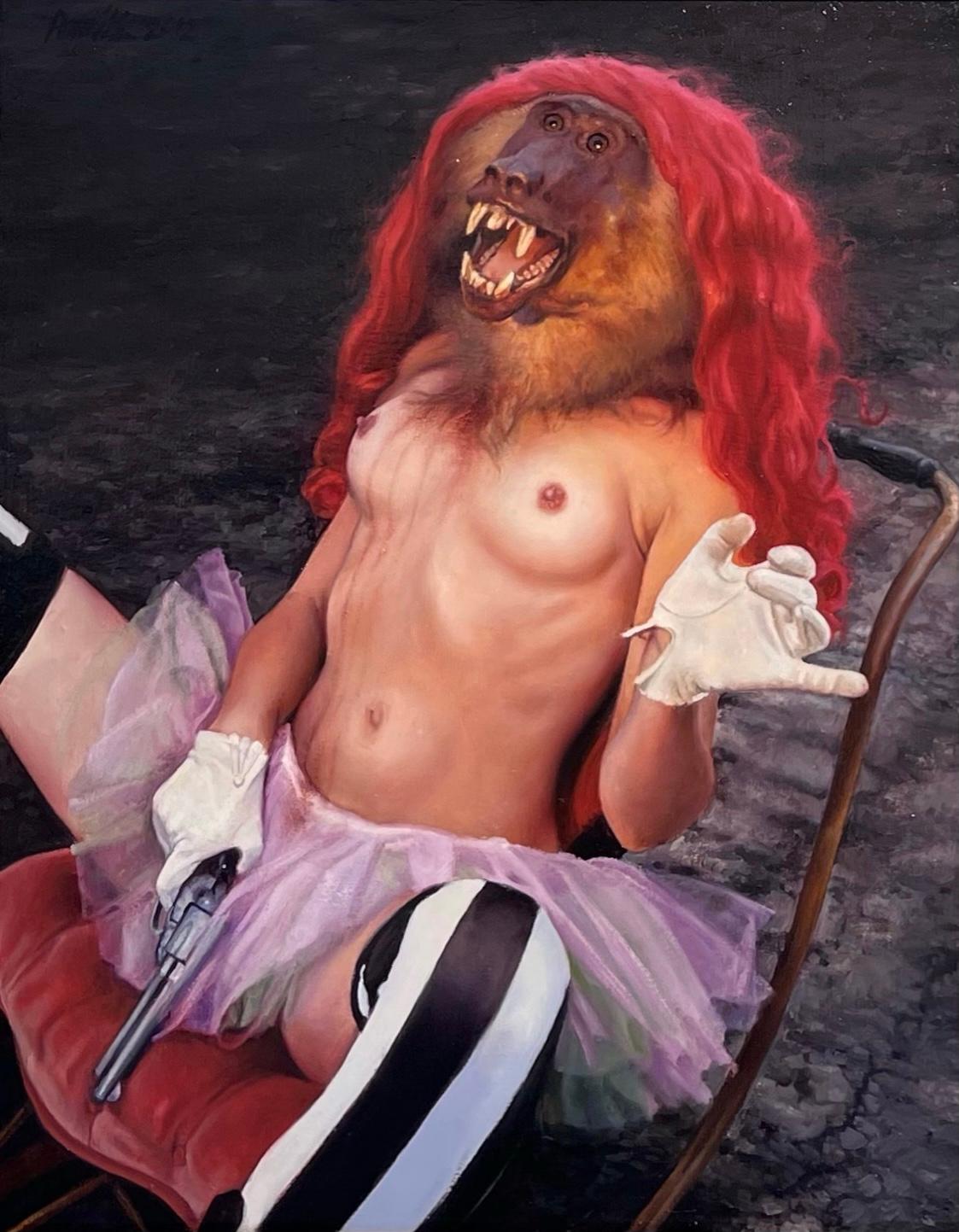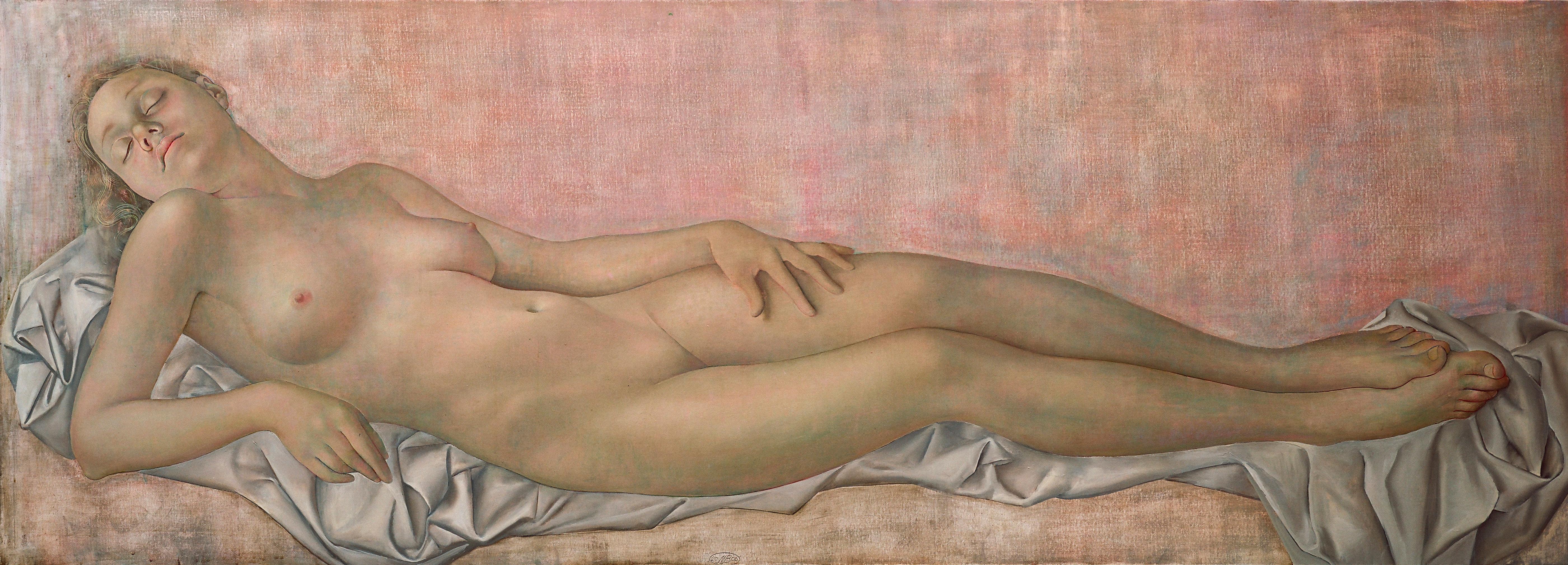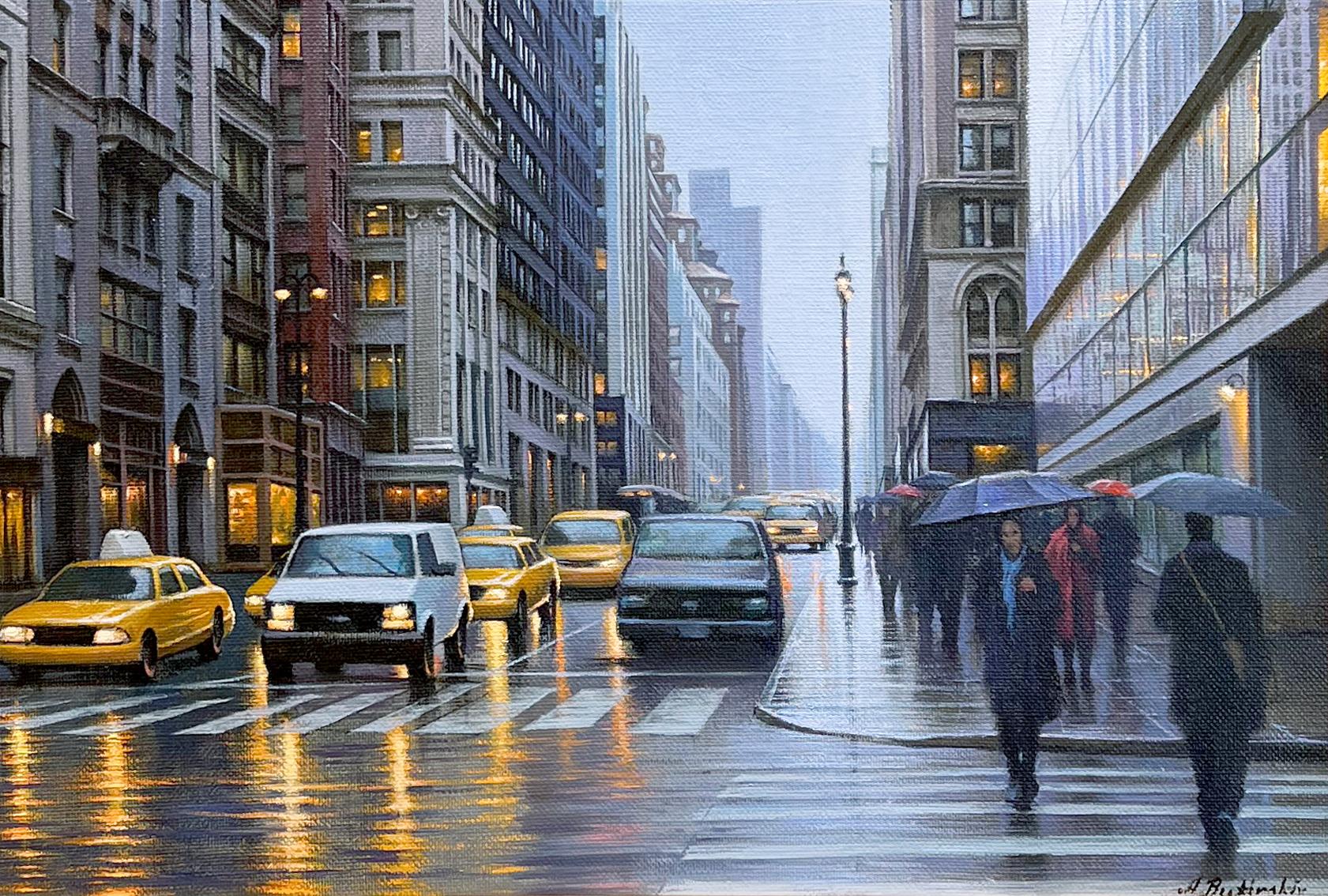Items Similar to The Prayer Rug 19th-century Orientalist Oil Painting on Canvas, Signed
Want more images or videos?
Request additional images or videos from the seller
1 of 14
Addison Thomas MillarThe Prayer Rug 19th-century Orientalist Oil Painting on Canvas, SignedCirca 1890
Circa 1890
About the Item
Description:
Addison Thomas Millar (1860-1913) was an American painter known for his captivating depictions of scenes from daily life, as well as his exploration of landscapes and architectural subjects. Born in Warren, Ohio, Millar’s passion for art blossomed during his early education when he received painting lessons from local landscape artist John Bell.
In his late teens, Millar’s talent gained recognition as he won three consecutive awards from The Youth’s Companion in their annual art contests. Encouraged by this success, his parents allowed him to travel to Cincinnati to study under genre painter De Scott Evans, where he received formal art lessons. Afterward, Millar established himself as a portrait painter in Cleveland before eventually relocating to New York City in 1883.
In New York, Millar continued his artistic education at the Art Students League, as well as the Shinnecock Hills Summer School of Art under the tutelage of William Merritt Chase. Seeking further artistic growth, Millar ventured to Paris in 1894, where he studied at the Académie Julian under renowned artists Jean-Joseph Benjamin-Constant and Giovanni Boldini.
Millar’s time in Europe greatly influenced his work. His visit to Spain and subsequent journey to Algiers with his friend Chase provided inspiration for many of his renowned works. The experience allowed him to immerse himself in the vibrant and culturally rich environment, which he skillfully depicted in his art.
Throughout his career, Millar held exhibitions in various cities across the United States, including Philadelphia, Boston, and Chicago. He became a member of esteemed organizations such as the Society of American Artists and the National Academy of Design, solidifying his position in the art world.
Tragically, Millar’s life was cut short when he and his wife were killed in a car accident in South Norwalk, Connecticut. However, his artistic legacy lives on through his notable body of work, which can be found in prestigious institutions such as the Smithsonian Institution, the New York Public Library, the Boston Museum of Fine Art, and the Bibliothèque nationale de France. Additionally, his artwork has been featured at the Detroit Institute of Arts, the Library of Congress, and the Rhode Island School of Design.
In recent years, Millar’s paintings have gained attention in the art market. Furthermore, Millar’s painting titled “The Waterfall” became part of the Vice-President’s Residence art collection when Mike and Karen Pence added several pieces of artwork borrowed from the Smithsonian’s archives.
One notable artwork by Addison Thomas Millar is “The Prayer Rug.” In this painting, Millar skillfully captures the essence of Arabic architecture and the daily life of the period. The piece is marked by its realistic lighting, which casts a warm and inviting glow on the scene. Within the composition, viewers can observe a bustling rug store, showcasing an array of vibrant patterns and colors. Millar’s attention to detail brings to life the intricacies of the rugs, allowing the viewer to appreciate the craftsmanship and artistry present in each one.
“The Prayer Rug” offers a glimpse into the rich cultural tapestry of the time, portraying not only the architectural elements but also the people engaged in their daily routines. Through his meticulous brushwork, Millar successfully immerses the viewer in a bygone era, evoking a sense of authenticity and transporting them to a different world. The painting stands as a testament to Millar’s ability to capture the essence of a place and time, while showcasing his technical skill and artistic vision.
- Creator:Addison Thomas Millar (1860-1913, American)
- Creation Year:Circa 1890
- Dimensions:Height: 39 in (99.06 cm)Width: 44.5 in (113.03 cm)
- Medium:
- Movement & Style:
- Period:
- Condition:
- Gallery Location:Jacksonville, FL
- Reference Number:
Addison Thomas Millar
Addison Thomas Millar is a contemporary artist known for his captivating and thought-provoking works. Born in 1985, he discovered his passion for art at a young age and embarked on a journey to explore and hone his artistic talents. Millar's artistic journey began with formal training at prestigious art schools, where he studied various techniques and mediums. His dedication and curiosity led him to experiment with different styles, pushing the boundaries of his creativity. As a self-taught artist, Millar's unique perspective and artistic vision allowed him to develop a distinct and recognizable style. His works often combine elements of realism with surrealism, resulting in paintings that challenge conventional perspectives and evoke deep emotions. Throughout his career, Millar has exhibited his art in numerous galleries and art shows, garnering praise and admiration from art enthusiasts and collectors alike. His ability to evoke emotions and provoke contemplation through his art has earned him a dedicated following of admirers. Millar's paintings often delve into themes of human nature, the complexities of life, and the interplay between reality and imagination. Each brushstroke conveys a story, inviting viewers to delve into the depths of their own thoughts and emotions. Beyond his artistic prowess, Addison Thomas Millar is also recognized for his philanthropic endeavors. He believes in giving back to the community and has been actively involved in supporting charitable causes through his art. As a contemporary artist, Millar continues to push the boundaries of creativity and challenge the conventional norms of the art world. His passion, dedication, and unwavering commitment to his craft make him an influential and inspiring figure in the art community. Addison Thomas Millar's journey as an artist is an ongoing exploration of the human experience, a testament to the power of art in evoking emotions, sparking imagination, and inspiring change. With each new painting, he leaves an indelible mark on the world of art and leaves us eagerly anticipating what he will create next.

About the Seller
No Reviews Yet
Vetted Seller
These experienced sellers undergo a comprehensive evaluation by our team of in-house experts.
Established in 1960
1stDibs seller since 2023
10 sales on 1stDibs
Typical response time: 15 hours
- ShippingRetrieving quote...Ships From: Jacksonville, FL
- Return PolicyA return for this item may be initiated within 7 days of delivery.
More From This SellerView All
- "Walking Among the Backyard" 18th Century Antique Oil Painting on CanvasLocated in Jacksonville, FL"Walking Among the Backyard" is a mesmerizing antique oil painting on canvas that transports viewers to the elegant world of 18th-century Europe. The artwork depicts a European lady ...Category
19th Century Realist Figurative Paintings
MaterialsCanvas, Oil
- "The View Of Jerusalem" 19th-century Realism Orientalist Oil on PanelBy Anna Richards BrewsterLocated in Jacksonville, FLProvenance: Private Collection, Palm Beach, Fl. AB Levy Gallery, October, 2019 Description: Experience the captivating artistry of Anna Richards Brewster (1870...Category
Early 1900s Realist Figurative Paintings
MaterialsCanvas, Oil
- The Dance Large Antique Orientalist Oil Painting on Canvas, Signed, 19th CenturyLocated in Jacksonville, FLThe Painting is Signed Description: Fabbio Fabbi (1861-1946) was an Italian painter renowned for his Orientalist artworks and his ability to capture the beauty and allure of Eastern...Category
Late 18th Century Realist Figurative Paintings
MaterialsOil, Canvas
- Harem Girls in the Palace Courtyard 19th Century Antique Oil Painting on CanvasBy Fabio FabbiLocated in Jacksonville, FLDescription: Fabio Fabbi: A Master of Orientalist Intrigue The painting is signed on the bottom left side. Fabio Fabbi, an esteemed Italian artist of the late 19th and early 20th centuries, emerged as a prominent figure within the Orientalist art movement. Born in Rome in 1861, Fabbi’s passion for capturing the exotic and mysterious landscapes and cultures of the East would define his artistic career and leave an indelible mark on the art world. Fabbi’s artistic journey began with formal training at the Accademia di Belle Arti in Rome, where he developed a deep appreciation for classical techniques and aesthetics. However, it was his encounters with Orientalist themes and subjects that ignited his imagination and set him on a path to becoming a renowned master of Orientalist art. One of Fabbi’s most captivating works, “Harem Girls in the Palace Courtyard,” stands as a testament to his exceptional talent for depicting scenes of intrigue and sensuality within the luxurious settings of the Ottoman Empire. This mesmerizing painting invites viewers into the opulent world of a harem, where a group of beautiful women gracefully gather in a sunlit courtyard. Fabbi’s brushwork skillfully captures the vibrant colors, exquisite textiles, and intricate architectural details that define the environment. In “Harem Girls in the Palace Courtyard,” Fabbi delves into the alluring realm of the harem, exploring the interplay between power, desire, and secrecy. With meticulous attention to detail, he captures the expressions and body language of the women, evoking a sense of mystery and sensuality. The play of light and shadow adds depth and dimension to the composition, further immersing viewers in the rich atmosphere of the scene. Fabbi’s ability to weave narratives within his artworks sets him apart. “Harem Girls in the Palace Courtyard” not only showcases his technical skill but also tells a story—a glimpse into a hidden world that fascinates and captivates. Through his artistry, Fabbi offers a nuanced portrayal of Eastern culture, emphasizing the beauty and complexity that lie beneath the surface. Throughout his career, Fabio Fabbi gained recognition and admiration for his Orientalist works. His paintings were exhibited in prominent galleries across Europe, where audiences marveled at his ability to transport them to distant lands and evoke a sense of wonder and intrigue. Fabbi’s talent for capturing the essence of Orientalist themes and his exquisite attention to detail earned him a place among the most respected artists of his time. Fabio Fabbi’s legacy lives on through his remarkable artworks. His ability to portray the mysteries and allure of the East continues to inspire and captivate art enthusiasts worldwide. “Harem Girls in the Palace Courtyard” exemplifies Fabbi’s mastery of the Orientalist genre, inviting viewers to step into a world of beauty, enchantment, and hidden desires. His paintings exhibited at prestigious venues in Turin and Milan. Knighted in the Order of the Crown of Italy in 1892. Notable works include the Sacred Heart...Category
19th Century Realist Figurative Paintings
MaterialsCanvas, Oil
- "Women in garden" 19th Century Oil Painting on CanvasLocated in Jacksonville, FLJohn Edmund Califano, an American artist born in the late 19th century, was known for his remarkable skills in capturing the beauty of everyday life through his paintings. Califano'...Category
19th Century Realist Figurative Paintings
MaterialsOil
- Pair of 19th Century Orientalist Realist Oil Paintings on BoardLocated in Jacksonville, FLVictor Huguet, a distinguished 19th-century French artist known for his contributions to the Orientalist art movement, crafted a captivating pair of paintings that beckon viewers int...Category
19th Century Realist Figurative Paintings
MaterialsOil, Board
You May Also Like
- "The Mooring of Scarlet, " Oil PaintingBy Pamela WilsonLocated in Denver, COPamela Wilson's (US based) "The Mooring of Scarlet" is an original, handmade oil painting that depicts a pregnant model with a boat on top of her head. This...Category
2010s Realist Portrait Paintings
MaterialsCanvas, Oil
- "Metempsychosis: Ginger Snapped, " Oil PaintingBy Pamela WilsonLocated in Denver, COPamela Wilson's (US based) "Metempsychosis: Ginger Snapped" is an original, handmade oil painting that depicts a topless female model with a Baboon head. This is a secondary market...Category
2010s Realist Portrait Paintings
MaterialsCanvas, Oil
- Rocks GlassesBy Inkyeong BaekLocated in New York, NYOil painting on canvas by female Korean artist based in New York. Hyper-realistic, Trompe-l’œil painting that depicts an assortment of glass vessels. The glasses seem to pop off the canvas through optical illusion that renders the image in three-dimensions. Sensational paintings of glass vessels come to life in this dynamic exhibition featuring new works by Korean artist Inkyeong Baek. Demonstrating an uncanny ability to capture her subject-matter, Baek’s enchanting oil paintings glitter with a gemstone-like quality that truly captivates. The material characteristics of glass are fickle, often visually elusive. Yet each work on display beautifully illustrates, in stunning, hyper-realistic detail, an array of objects, from champagne flutes to whisky tumblers. Take the large-scale painting, Rocks...Category
2010s Realist Still-life Paintings
MaterialsCanvas, Oil
- "Moonlit River Scene", Early 20th Century Oil on Canvas by Luis Graner y ArrufiBy Luis Graner Y ArrufiLocated in Madrid, ESLUIS GRANER Y ARRUFI Spanish, 1863 - 1929 MOONLIT RIVER SCENE signed and dated "L. Graner, 1925" (lower right) Oil on canvas 20-1/8 X 30 inches (51X 76 cm.) framed: 25-3/4 X 35-3/4 inches (65 X 90.5 cm.) PROVENANCE NEAL AUCTION COMPANY, New Orleans, LA, USA Private Collection, Barcelona Graner paints this work, Moonlit on the river, during his stay in the United States in the last stage of his artistic life, from 1910 to 1928, in full stage of maturity. This artwork reflects the constant search of the artist for the effects of light in his work. This persistent concern for light remains throughout his artistic life, which he learned in his Parisian stage under the influence of the painter Frances Platour. The silver light of the moon and the small lights at distance, which are tiny foci of artificial light, reflecting the river water, forming a chromatic range of greens, ocher and pearly that give a certain mystery to the composition, creating a modern approach to the landscape, by placing the two large trees at the edge of the river in the foreground Luís Graner y Arrufí, Spanish (1863–1929) was a Catalan painter in the Realistic style. He was born in Barcelona, and studied at the Escola de la Llotja from 1883, with Antoni Caba (color/composition) and Benet Mercadé (drawing). During his final year at school, he received a grant to study in Madrid, where he copied and learned from the Old Masters at the Museo del Prado. After that, supported by a fellowship, he moved to Paris and became a member of the Academie des Beaux-Arts. Later, he returned to Barcelona, but continued to travel to cities throughout Europe, including Berlin, Munich and Düsseldorf. Influenced by Richard Wagner's concept of "Gesamtkunstwerk" (Total Work of Art), he was motivated to create his own total art experience and organized the "Sala Mercè" (Mercy Hall) in Barcelona's Rambla District. The project involved contributors from every artistic discipline, including the new field of cinematography. The room was decorated by Antoni Gaudí. Other participants included Adrià Gual, Santiago Rusiñol, Ramon Casas...Category
1920s Realist Landscape Paintings
MaterialsCanvas, Oil
- Venus. 2006. Oil on canvas, 66x183 cmLocated in Riga, LVVenus. 2006. Oil on canvas, 66x183 cm Realistic woman act on drapery Normunds Braslinsh (1962) Born 1962 in Riga, Latvia 1980–1986 Latvian Academy of Art, Painting Department 1973–...Category
Early 2000s Realist Figurative Paintings
MaterialsOil, Canvas
- Alexei Butirskiy, "N.Y. Cabbies", 14x20 Manhattan Cityscape Oil PaintingLocated in Saratoga Springs, NYThis piece, "N.Y. Cabbies", is a 14x20 landscape oil painting on canvas by artist Alexei Butirskiy featuring a view down a busy street in Manhattan, New York City on a rainy day. Ped...Category
2010s Realist Landscape Paintings
MaterialsCanvas, Oil
Recently Viewed
View AllMore Ways To Browse
Oil Painting Thomas
Thomas Oil Painting
19th Century Paintings Of New York
Antique Library Sign
Antique Library Signs
Cincinnati Painting
19th Century Painting Architecture
19th Century European Oil Paintings
Oil Paintings Signed Thomas
Philadelphia 19th Century
1894 Oil Painting
French Market Scene Painting
Prayer Painting
Antique Store Signs
19th Century Spanish Paintings
Antique Boston Sign
Antique Oil Paintings People
European School Paintings 19th Century






